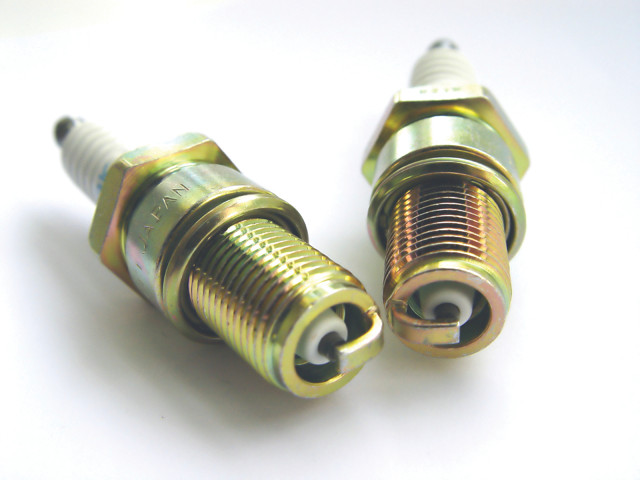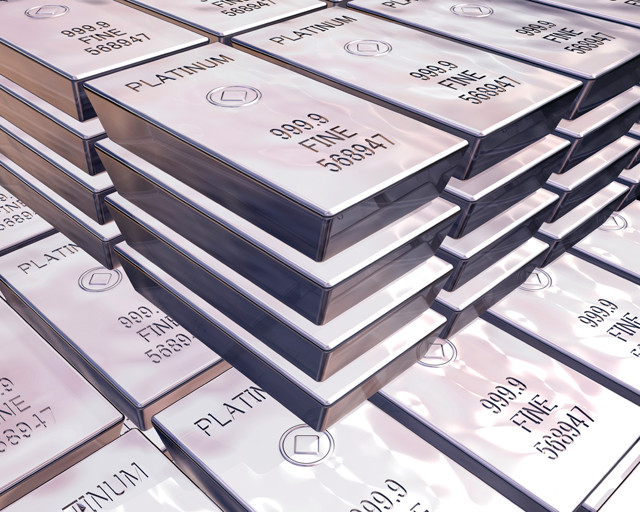
by U.S. Geological Survey Thursday, June 14, 2018
Patricia J. Loferski, a mineral commodity specialist for the U.S. Geological Survey, compiled the following information on platinum group metals, used mainly in automobile catalytic converters.

Iridium is used in spark plugs. Credit: ©iStockphoto.com/Melissa King
The platinum group metals (PGMs) are among the rarest mineral commodities in Earth’s crust. They include iridium, osmium, palladium, platinum, rhodium and ruthenium.
The PGMs occur together in nature, closely associated with nickel and copper, primarily in two major types of ore deposits. One deposit type is in distinct horizons within large, layered igneous complexes, such as the Bushveld Complex of South Africa, the Great Dyke of Zimbabwe and the Stillwater Complex of the United States. Most of the world’s PGMs are currently produced from the Bushveld Complex. The other leading type of deposit is in massive and disseminated nickel-copper ores, such as those of the Norilsk-Talnakh deposits of Russia and the Sudbury Basin deposits in Canada. In these deposits, PGMs are byproducts of nickel and copper mining. In both types of deposits, PGMs occur as sulfides, arsenides, tellurides and in solid solution as natural alloys or within other sulfide minerals.
Platinum is considered a precious metal today, but the 16th century Spanish conquistadors considered it an unwanted impurity in the gold and silver that they were mining in New Granada (present-day Colombia). The Spaniards referred to the metal as platina, a diminutive of plata, the Spanish word for silver, and for many years it had no commercial value. The first melting of platinum was achieved in 1782, but it was not until the mid-19th century that separation and refining of PGMs were accomplished.

Like gold, platinum in the form of bars is used as an investment material. Credit: ©iStockphoto.com/Paul Fleet
Today, the leading use of PGMs is in catalytic converters that clean harmful exhaust from vehicle engines. Since their introduction in 1975, PGM-based catalytic converters have kept more than 12 billion tons of pollution from entering Earth’s atmosphere. There are no known substitutes for PGMs in catalytic converters, and their use in that sector is expected to increase.
PGMs are also used in the chemical industry as catalysts to produce nitric acid and in the petroleum refining industry to increase the octane rating of gasoline. Palladium is used in multilayer ceramic capacitors and in hybrid integrated circuits. Iridium is used in spark plugs for both the automotive and aerospace industries. In addition, iridium crucibles are used for the production of high-purity single crystals of various metal oxides.
Jewelry is the second leading use of platinum. In the electronics industry, both platinum and ruthenium are used in computer hard disks to improve storage capacity. Platinum and platinum-rhodium alloys are used in glass-making equipment, including that used in the production of fiberglass and liquid crystal displays (LCDs). Platinum is also used in fuel cells, which are devices that produce electricity by combining a fuel, such as hydrogen, with oxygen from air in the presence of a catalyst such as platinum. Fuel cells can be used for vehicles and as stationary power sources for homes and offices. Platinum and palladium are also used as investment metals in the form of bars and coins, like gold or silver.
For more information on platinum group metals and other mineral resources, visit http://minerals.usgs.gov/minerals.
Two mines in the United States, the Stillwater and East Boulder Mines in Montana, produced 15,500 kilograms of platinum and palladium in 2008, which was about 4 percent of world supply.
South Africa accounted for about 77 percent of the world’s platinum and 37 percent of the world’s palladium production in 2008; Russia produced about 43 percent of the world’s palladium.
South Africa contains about 89 percent of the world’s PGM reserves.
In 2008, autocatalysts accounted for approximately 81 percent, 47 percent and 44 percent of world consumption of rhodium, palladium and platinum, respectively.
Virtually all cell phones and computers contain PGMs.
White gold is an alloy of gold and either palladium or nickel.
Nickel-copper-PGM deposits at Sudbury, Ontario, Canada, may have been formed by a giant meteorite impact.
PGM refining is a complex process because the chemical similarities of the metals make their separation difficult. The time between mining the ore and production of pure metal ranges from about six weeks for palladium to as much as five months for rhodium.
Platinum and rhodium have the highest market values of all metals. In April, the prices of platinum and rhodium were $1,730 and $2,925 per troy ounce, respectively; in comparison, gold and silver prices were $1,159 and $18 per troy ounce, respectively.
© 2008-2021. All rights reserved. Any copying, redistribution or retransmission of any of the contents of this service without the expressed written permission of the American Geosciences Institute is expressly prohibited. Click here for all copyright requests.